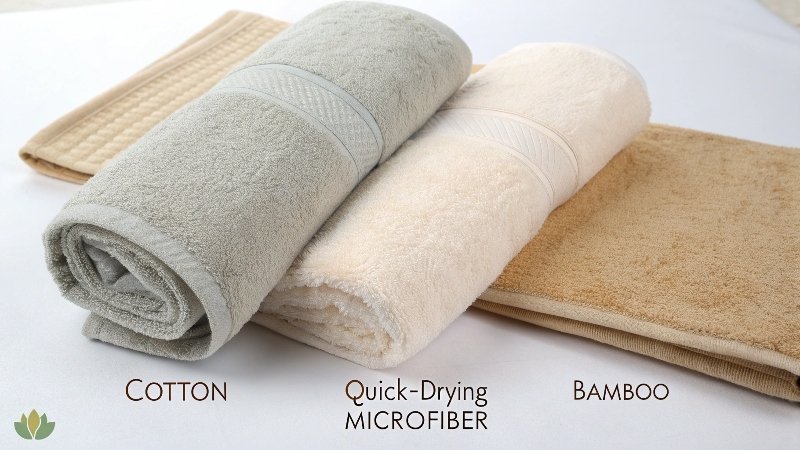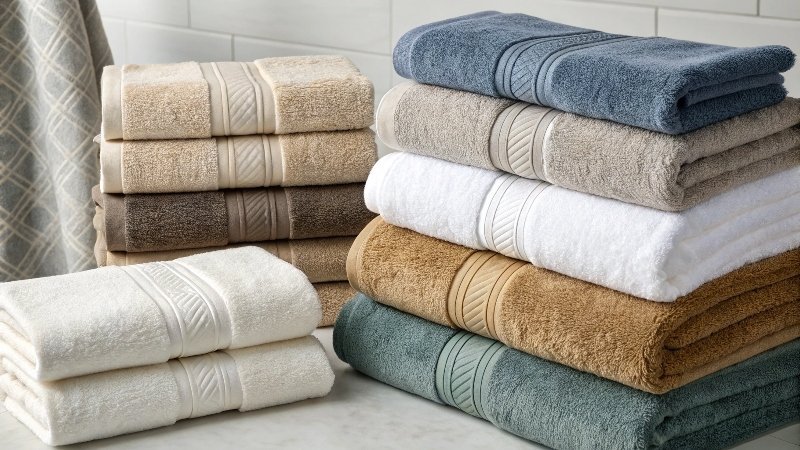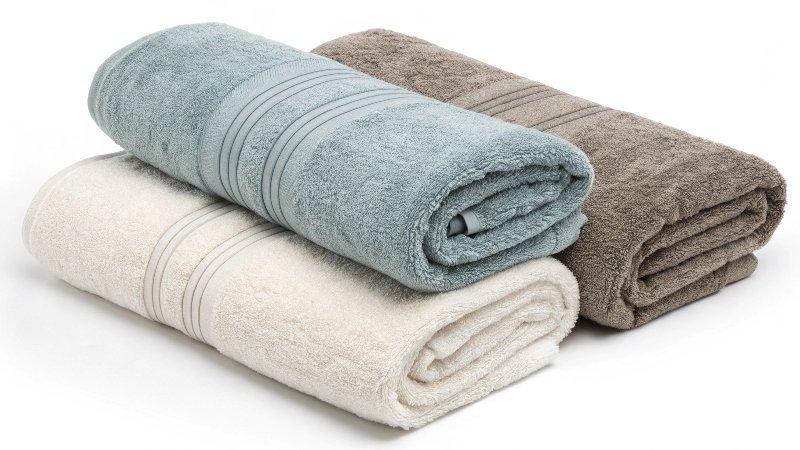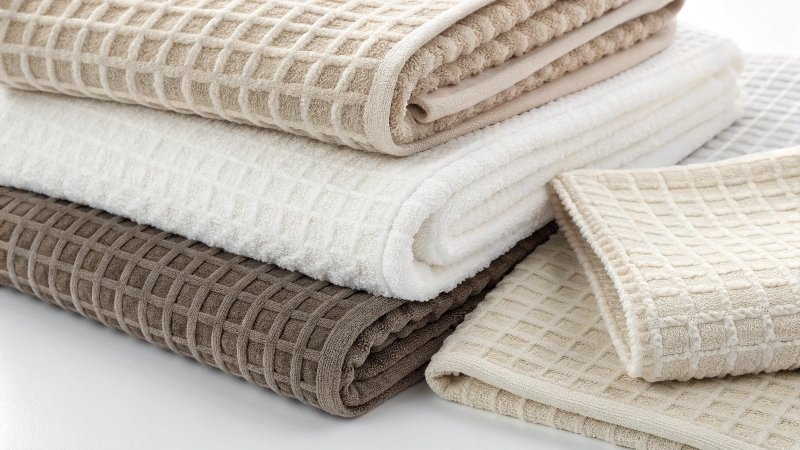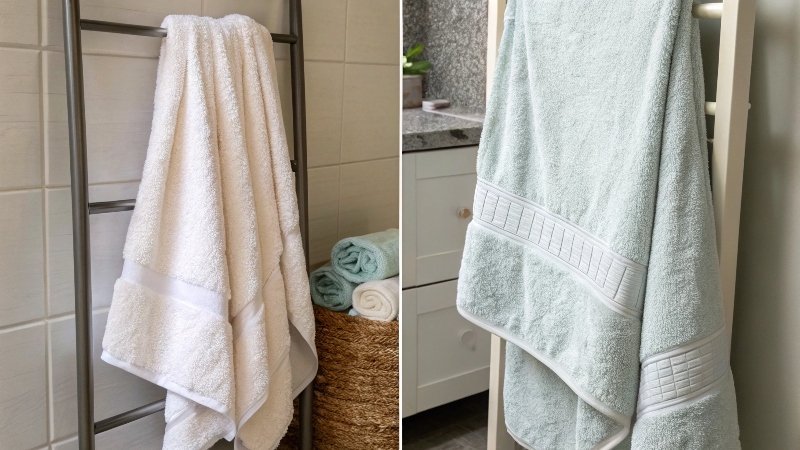Choosing the right towel fabric feels overwhelming. Make the wrong call, and you’re stuck with stock that doesn’t sell. I’ll help you pick the perfect material for your brand.
The best bath towel fabric depends entirely on its intended use. For all-around luxury and home use, cotton is king. For quick-drying performance, microfiber is ideal. For an eco-friendly, soft touch, bamboo is a fantastic choice. Understanding your customer’s needs is the key to deciding.
Picking the right material is probably the most important decision you’ll make when creating a towel line. It affects everything from the feel and performance to the price point and your brand’s story. I’ve guided hundreds of clients through this process, and it always comes down to matching the fabric to the customer. Let’s break down the options so you can make a confident choice that leads to happy customers and repeat orders.
What fabric is used for bath towels?
You see rows of towels, and they all look fluffy. But the material they’re made from changes everything. Let’s look at what’s actually under the hood of a towel.
Most bath towels are made from cotton, with popular types being Egyptian, Pima, and Turkish cotton. Other common materials include synthetic microfiber, natural bamboo, and even linen. The choice of material directly impacts the towel’s softness, absorbency, and durability, defining its purpose and quality.
When we talk about towel fabric, we’re usually talking about two things: the fiber and the weave. The fiber is the raw material, while the weave is how it’s constructed. Most towels you see use a terry cloth weave, which creates the loops that make towels so absorbent. But the fiber itself can vary a lot.
Here’s a quick rundown of the most common materials I work with at TowelTrend:
- Cotton: This is the industry standard for a reason. It’s natural, absorbent, and feels great on the skin. The quality can vary greatly depending on the fiber length, which we’ll get into.
- Microfiber: This is a synthetic material, usually a blend of polyester and polyamide. It’s known for being incredibly absorbent and drying extremely fast.
- Bamboo: Technically a rayon fabric, the cellulose is extracted from bamboo pulp. It’s celebrated for its silky softness and sustainable reputation.
At my factory, cotton is the number one request, but we’ve seen a huge surge in demand for bamboo from eco-conscious brands and microfiber from sports and travel companies.
Which material is best for bath towels?
Now that you know the options, how do you choose the "best" one? The best for a five-star hotel is different from the best for a high-intensity gym.
For pure luxury and high absorbency in a home or hotel setting, 100% long-staple cotton like Turkish or Egyptian is best. For sports, travel, or cleaning, microfiber is superior due to its light weight and fast-drying ability. Bamboo is best for eco-friendly brands wanting ultimate softness.
There is no single "best" material—only the best material for a specific job. I always ask my clients, "Who is your customer, and where will they be using this towel?" The answer tells us everything. For example, a client creating a line for new parents wanted the softest, most gentle towel possible. We went with bamboo. Another client, an Amazon seller targeting campers, needed something lightweight and quick-drying. Microfiber was the clear winner.
To make it easier, I’ve broken it down by key attributes in this table. This is the same framework I use to guide brand owners every day.
| Attribute | Cotton | Microfiber | Bamboo |
|---|---|---|---|
| Absorbency | High | Very High | High |
| Softness | Soft & Plush | Functional Softness | Silky Soft |
| Drying Speed | Slow-to-Medium | Very Fast | Medium |
| Durability | Very High | High | Medium |
| Best For | Home, Hotels, Spas | Gym, Travel, Cleaning | Eco-Brands, Babies |
| Feel | Natural, comfortable | Synthetic, can "grip" skin | Smooth, luxurious |
Think about your brand’s promise. Are you selling luxury and comfort? Go with cotton. Are you selling performance and convenience? Microfiber is your answer. Are you selling a green, gentle lifestyle? Bamboo is perfect.
What is towel fabric called?
You hear words like "terry cloth," "velour," and "waffle weave" a lot. It can be confusing. Are these materials or something else? Let’s clear up the language.
The most common fabric structure for towels is called terry cloth. This refers to the weave with uncut loops that make towels absorbent and fluffy. The material is typically cotton, but the fabric style itself is terry. Other styles include waffle weave and velour.
This is a critical distinction for anyone manufacturing towels. The material (the fiber) and the weave (the construction) are two different specifications you’ll need to provide. You can have a cotton towel with a terry weave, or a cotton towel with a waffle weave.
Here’s a simple breakdown of the main weaves we produce:
Terry Cloth
This is the classic towel weave. It features prominent loops of thread on both sides, which act like tiny sponges to soak up water. It’s the workhorse of the towel world, perfect for bath towels where absorbency is the top priority. The height and density of these loops determine the towel’s GSM (grams per square meter) and overall plushness.
Velour
Velour is not a different material; it’s a finish. We take a standard terry cloth towel and shear the tops of the loops off one side. This creates a soft, velvety surface that feels incredibly luxurious. The sheared side is less absorbent but provides a perfect, smooth canvas for high-detail printing and embroidery. I often recommend this for beach towels or promotional towels where a vibrant logo is key.
Waffle Weave
This weave creates a honeycomb texture. Waffle weave towels are lightweight, dry very quickly, and are less bulky than terry. They are a popular choice for spa robes, kitchen towels, and hair towels because of their exfoliating texture and quick-dry properties.
Is microfiber or cotton better for bath towels?
This is the big question for many brands. One is the traditional champion, the other is the modern challenger. Which one should you build your brand around?
For everyday bath towels, cotton is better. Its natural fibers offer a superior plush feel and absorb water comfortably. Microfiber is better for specific tasks like gym use or travel, where its ultra-fast drying time and light weight are more important than a luxurious feel.
I get this question almost daily from new clients. They see the low cost and high performance claims of microfiber and wonder if it’s the future. My answer is almost always the same: for a primary bath towel line, stick with cotton. The customer expectation for a bath towel is a soft, plush, and natural feel. Cotton delivers this perfectly. Microfiber can feel synthetic and "clingy" on wet skin, which isn’t what most people want after a relaxing shower.
However, that doesn’t mean microfiber is bad; it’s just specialized. We have several successful clients who sell microfiber towels to very specific markets. One sells to yoga studios, another to car detailing businesses. In those contexts, it’s the best tool for the job.
Here is a direct comparison to help you decide:
| Feature | 100% Cotton | Microfiber (Polyester/Polyamide) |
|---|---|---|
| Feel | Natural, soft, plush | Synthetic, smooth, can grip the skin |
| Absorbency | Absorbs water into the fibers | Holds water between fibers, can feel like it’s pushing water |
| Drying Speed | Slower | Extremely fast |
| Primary Use | Bath, Spa, Hotel, Home | Gym, Travel, Cleaning, Beach, Car |
| Bulk | Thicker and heavier | Very thin and lightweight |
| Care | Easy, can use fabric softener | No fabric softener (clogs fibers), avoid high heat |
For most brands aiming to create a premium product for the home, I strongly recommend a high-quality, long-staple cotton. It’s a timeless choice that delivers the comfort and luxury customers expect from a bath towel.
Conclusion
Choosing the best towel fabric is about matching the material to your customer. Cotton offers timeless luxury, microfiber provides modern performance, and bamboo delivers eco-friendly softness. Know your audience to succeed.

